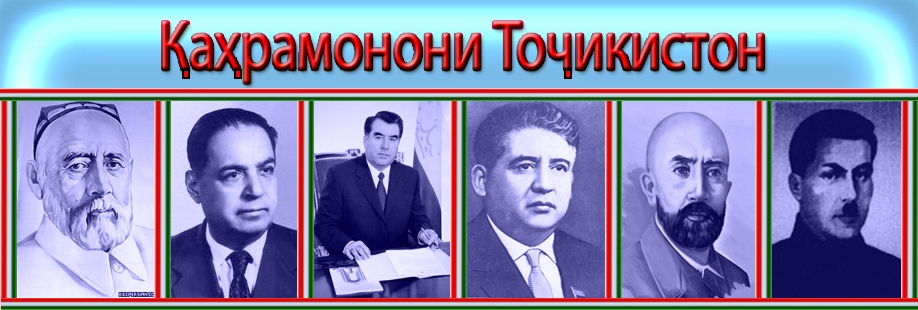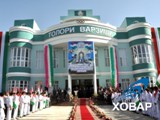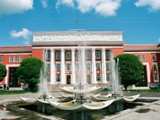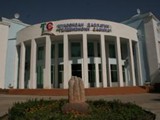| History of Tajikistan |
Ancient period
Aryan tribes (Aryans) - the name of the ancient Indo-Iranian tribes, who at the beginning of the II millennium BC broke away from the Indo-European tribes settled in Central Asia ("Ayiryana Vaedzha" (avest. - Aryan expanse, the country). At the end of II thousand years of our AD they migrated into the lands of present-day Iran and northern India. in historical sources the Aryans (arya) are referred to as the ancestors of the peoples of Ariana, Turan, Ancient Bactria, Sogdiana, Khorezm, the Great, Persia, Media, and Khorasan.
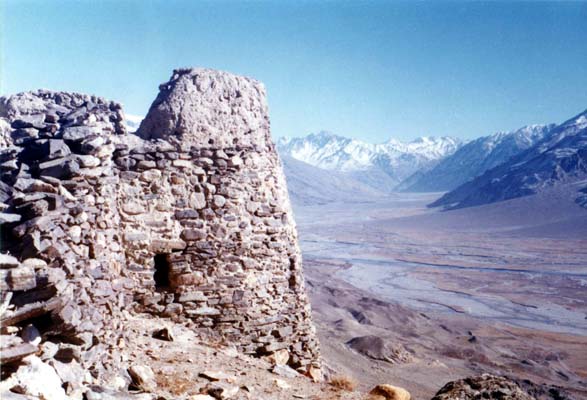
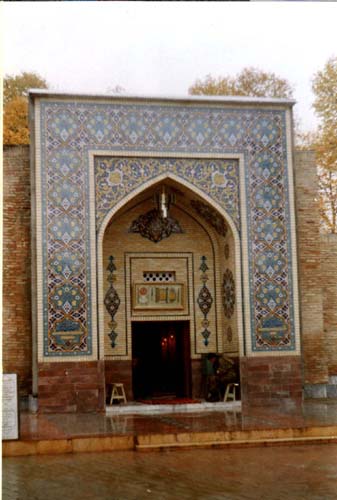
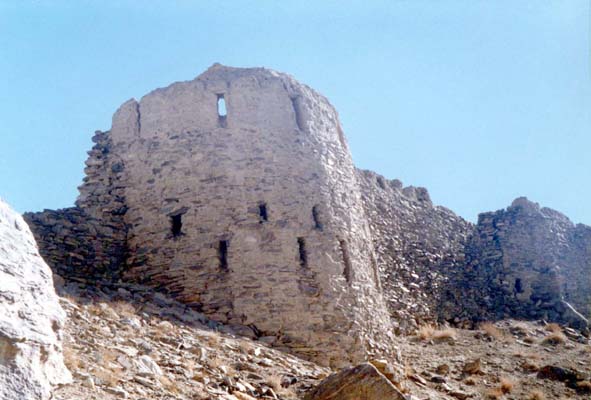
Avestan period
Ayiryana Vaedzha (avest. «Airyanem Vaejo») - «Aryan expanse," the legendary Airyan? M Vaejo «Airyana Vaedzha", "Eranvezh" (cf. also the name of the mountain airyo.xsu? A-«Aryan satisfaction"). - Which covers the territory of modern Russia's Black Sea, Volga, Urals, the modern states of Kazakhstan, Kyrgyzstan, Uzbekistan, Tajikistan, and Xinjiang Uygur Autonomous Region of China. It settled Indo-Iranian tribes known by the "Avesta" as the Aryan tribes.
In "Avesta" refers to two more Ariana and Turan, which ruled at the beginning of the great kings of the dynasty Peshdodov.
Dynasty Peshdodov and Kayanidov - the first royal dynasty that ruled in Central Asia at the end of III - for the II millennium BC. Based on historical sources, the books "Avesta", "Shahnama" by A. Firdausi, "Tarihi Tabari" ("History of Tabari"), founder of the dynasty Peshdodov (avest. Paradata) was Hooshang and Kayanidov Dynasty (avest. Kavi) was Kai Qubad . These royal dynasties ruled in the Ariane
Ariana (on behalf of the tribe Ayirya) - in the II millennium BC the territory of the left bank of the Syr Darya, Amu Darya, Vakhsh then, that is, the southern part of Central Asia, eastern Iran and Afghanistan.
Turan (country) | Turan (on behalf of the tribe Tuyirya) - In the II millennium BC, the territory of the right bank of the Syr Darya first, and later in the middle or end of the II millennium BC. e.pravoberezhya Amu-Vakhsh. Comprising the territory of the steppe regions of the Southern Urals, Kazakhstan, Xinjiang Uygur Autonomous Region to the Altai Mountains in the north to the coast of the Amu Darya, Vakhsh in the south. Later Saka tribes and others have gained Sogdiana, Bactria, Khorezm, and all between the Amudarya and Syrdarya rivers which later became known as the generalized Turan. Conventional boundary between Arianna (Iran) and Turan in ancient times was first Syr Darya, and in more recent times, the Amu Darya.
The ancient period
Bactria (Bactriana) slaveholding country, located on both sides of the upper reaches of the Amu Darya, Vakhsh. Bactria was mentioned in the sources from the IX-VIvv. BCE. pre-state era of Kushan (I century AD. e..) Bactria was on Sovrem. Southern Tajikistan and Uzbekistan, Northern Afghanistan. Bactrian Bactrians mentioned - the Iranian language of Indo-Iranian subgroup of Indo-European language family. Modern Pashtuns and Tajiks - direct descendants of the ancient Bactrians. [3]
Sogdiana. (Sogdiana) Sogdiana means of obscheiranskogo root - "to shine", "burn," Taj. "Suhtan" another interpretation "lowland where water is going to - culture." Sogdiana slaveholding, then feudal country. In VII. Sogdiana was a Confederate state. It consisted of four parts: the northern Sogd (on the left bank to the Syr Darya Fergana), Samarkand Sogdiana (in the middle and upper reaches of the river. Zarafshan), Bukhara Sogdiana (in the lower reaches. Zarafshan), and southern Sogdiana (in the pool Kashkadarya). The administrative center of the city of Samarkand. Sogdiana is mentioned in sources from the IX-VIvv. BCE. AD to the conquest of the country's Arab Caliphate (VIII century BC). Sogdiana - was on Sovrem. Northern Territory. Tajikistan, Zarafshan and Kashkadarya region of Uzbekistan. Sogdian Sogdian spoken to - the Iranian language of Indo-Iranian subgroup of Indo-European language family. Modern Tajiks and yagnobtsy (whose language is an extension of Sogdian) - direct descendants of the ancient Sogdian.
Khorezm - slaveholding country, located in the Amudarya river basin (in the Middle Ages), the modern territory of the Khorezm region Uzbekistana.Horezm mentioned in the sources from the IX-VIvv. BCE. Kushan era prior to the establishment of state-va. Khorezmians spoke drevnehorezmiysky - Iranian language of Indo-Iranian subgroup of Indo-European language family. Modern Tajiks - direct descendants of the ancient Khorezm. [4]
Saka tribes roamed the steppe and foothill lands of Central Asia. They were divided into two confederations, Saks tigrohauda - ("peaked cap") and Saks haomavarga-("haoma" - air, plant, drink). Saki - the direct descendants of the nomads of Turan, to ancient Greek sources, they are called - "Scythians", "Massagets", "dahami" and "Savromat." In particular, Khotan Saka tribes spoke the Khotan-Saka - Iranian language of Indo-Iranian subgroup of Indo-European language family. Modern Tajiks, Pashtuns, Kurds, Baluchis, and results - direct descendants of the Sakas.
Independent Tajikistan (since 1991)
September 9 1991. - Adoption of the session Shuro Oli Statements and Resolution "On the State Independence of the Republic of Tajikistan." 9 September in the country as a holiday "Day of State Independence of the Republic of Tajikistan."
December 21 1991. - Accession of the Republic of Tajikistan in the Commonwealth of Independent States (CIS).
February 26 1992. - Accession of the Republic of Tajikistan in the Organization for Security and Cooperation in Europe (OSCE).
March 2, 1992. - Accession of the Republic of Tajikistan in the states - members of the United Nations (UN).
December 1 1993 - joining the Republic of Tajikistan in the states - members of the Organization of Islamic Conference (OIC).
In May 1992 after a coup attempt in Dushanbe, which made the supporters of the national-democratic opposition, the opposition were introduced into the government. The standoff between the former communist elite and national-democratic and Islamic forces took over from the political sphere in the ethnic-clan. In June, in southern Tajikistan, armed clashes erupted between supporters and opponents of Nabiev. Since the country's civil war began. August 31, opposition supporters seized the presidential residence, but was able to escape Nabiev. After this was established the Popular Front of Tajikistan, which declared its aims to restore "constitutional order". In November 1992, Nabiev resigned and the new leader of the country became a republic, Emomali Rakhmonov. In December 1992 the Popular Front forces took control of Dushanbe, but the civil war continued.
May 5, 1992 - June 27, 1997:. - During the civil war in Tajikistan. The damage to the national economy of the republic during the war, amounted to more than $ 10 billion.
November 16 - December 2, 1992. - XVI session Shuro Oli held in Khujand, where the November 19 President of the Republic of Tajikistan Shuro Oli was elected Emomali Rahmon.
November 6, 1994. - The adoption of the Constitution (Basic Law) of the Republic of Tajikistan on the results of a referendum. September 26, 1999. and June 22, 2003. - Amendments to the Constitution of the Republic of Tatarstan. November 6, 1994. election of the President of Tajikistan Emomali Rahmon.
May 12 1996. - Accession of the Republic of Tajikistan of the Organization for Economic Cooperation in Central Asia (ECO).
June 27, 1997. - Signing of the "General Agreement on Peace and National Accord in Tajikistan" in Moscow by the President of Tajikistan Emomali Rakhmonov and the head of the United Tajik Opposition (UTO) Said Abdullah Nuri. The final agreement was signed after eight rounds of talks between the government and the UTO RT (1994 to 1997.). June 27 declared a republic as a state holiday "Day of National Unity."
June 4, 1997 - April 1, 2000. - The work of the Commission on National Reconciliation (COM) consisting of 26 members (13chlenov - from the Government of the Republic of Tatarstan and 13 members - from the former opposition). CMO conducted in the implementation of life documents of the General Agreement on Peace of June 27, 1997.
November 3-10, 1998 - anti-government insurgency in the former colonel Khudoiberdiev Khujand and Sughd, which ended with the defeat of the rebels.
July-August 1999 - an attempt to invasion militias of the Islamic Movement of Uzbekistan (IMU), led by D. Namangani from Afghanistan via Tajikistan and Kyrgyzstan (Batken events) (Karategin) in Uzbekistan, which ended with the defeat of the rebels.
November 6, 1999., November 6, 2006 - re-re-election a referendum by the President of Tajikistan Emomali Rahmon.
February 27, 2000. - The election of deputies of the Majlisi Namoyandagon (63 deputies), March 23, 2000 .- in the Majlisi Milli (33 members) of the Majlisi Oli. Creating a professional parliament in the republic.
30 November 2000. - Introduction of national currency - the "TJS" in the Republic of Tajikistan.
October 10, 2000 - Signing of the Treaty establishing the EAEC in Astana. The Eurasian Economic Community (EurAsEC) is an international organization created by the Heads of State of the Republic of Belarus, the Republic of Kazakhstan, the Kirghiz Republic, the Russian Federation and the Republic of Tajikistan, on the basis of the Customs Union .*
June 15, 2001. - Accession of the Republic of Tajikistan of the Shanghai Cooperation Organization (SCO). The SCO members - Russia, China, Kazakhstan, Kyrgyz Republic, the Republic of Uzbekistan.
May 14, 2002. - Entry of Tajikistan in the CSTO. Organization of the Collective Security Treaty Organization (CSTO) - an international regional organization established by the Treaty on Collective Security on May 15, 1992. CST was transformed into the Collective Security Treaty Organization in December 2003 it was granted observer status at the UN General Assembly. CSTO members are Armenia, Belarus, Kazakhstan, Kyrgyzskaya Republic, Russian Federation, Tajikistan and Uzbekistan.
2005 to 2009. - Construction and commissioning of Sangtuda - 1 (670 MW), together with the Russian Federation.
2006 to 2009. - Construction and commissioning of high voltage power lines "South - South" (LEP-500) and "Khatlon - Chelanzar" (LEP-220). They are allowed to connect the grid of the southern and northern regions of Tajikistan.
2006 and 2010. - Construction and commissioning of the road Dushanbe-Khujand-Chanak (Uzbekistan), Dushanbe-Jirgital-Saritash (Kyrgyzstan), road tunnels "Istiqlol" Anzob to pass, and Sharshar Shahristan. They provided a year-round road connections between the northern and southern parts of Tajikistan, with access to Uzbekistan and Kyrgyzstan.
January 6 2010 - the beginning of the spread of shares Rogun among the population. Continued Rogun total capacity of 3600 MW. [13]
July 2009 - Law enforcement authorities have conducted anti-terrorist operation in the southeast of Tajikistan (Tavildara District), during which they killed 11 IMU militants, including their leader, Nemat Azizov. The detained militants said the chief organizer of an armed group was the former head of the Tajik Ministry of Emergency Situations Mirzo Ziyoyev, who was murdered by his militants. Soobschalo.s that the gunmen were part of the group Mullah Abdullah, a former leader of the United Tajik Opposition, which in 2009 illegally returned to Tajikistan from Afghanistan with approximately 100 svom supporters. [14] [15] [16]
August 23, 2010 - convicted of involvement in the coup and the illegal armed groups 25 militants Nemat Azizov fled from the detention center in Dushanbe, attacking guards. [17]
September of 2011. - Construction and commissioning of Sangtuda - 2 (220 MW) in cooperation with the Islamic Republic of Iran. Completion of the bridge over the river. Panj to Afghanistan in conjunction with Aga Khan IV Funds and road Dushanbe-Khujand-Chanak (Uzbekistan), Dushanbe-Jirgital-Saritash (Kyrgyzstan)
Government attributes the Republic of Tajikistan: National Emblem (on December 28, 1993.) Standard (24 November 1992.) Anthem (dated September 7, 1994.) Konstitutsiya (Basic Law) of the Republic of Tajikistan (November 6, 1994).
On other language
- Photo
- Video
- Music
- Dushanbe
- Sogdian Area
- Khatlon Area
- Badakhshan
- Regions of Republican Subordination
- Guestbook
Areas of Tajikistan
link
Interview
Rate my site!
WEATHER
Exchange Rate

